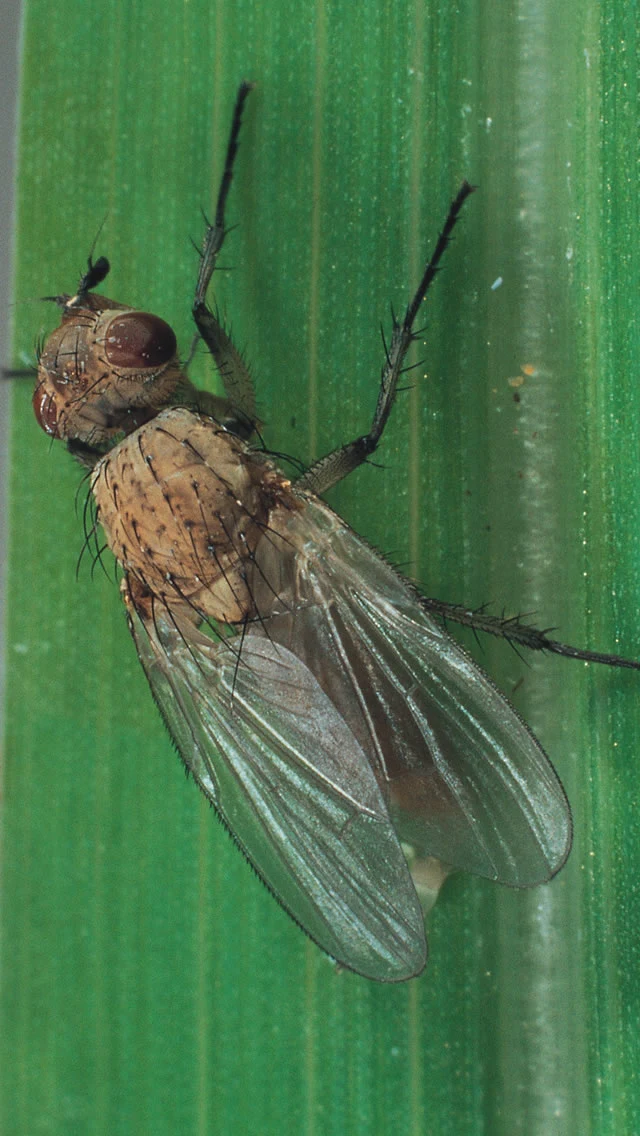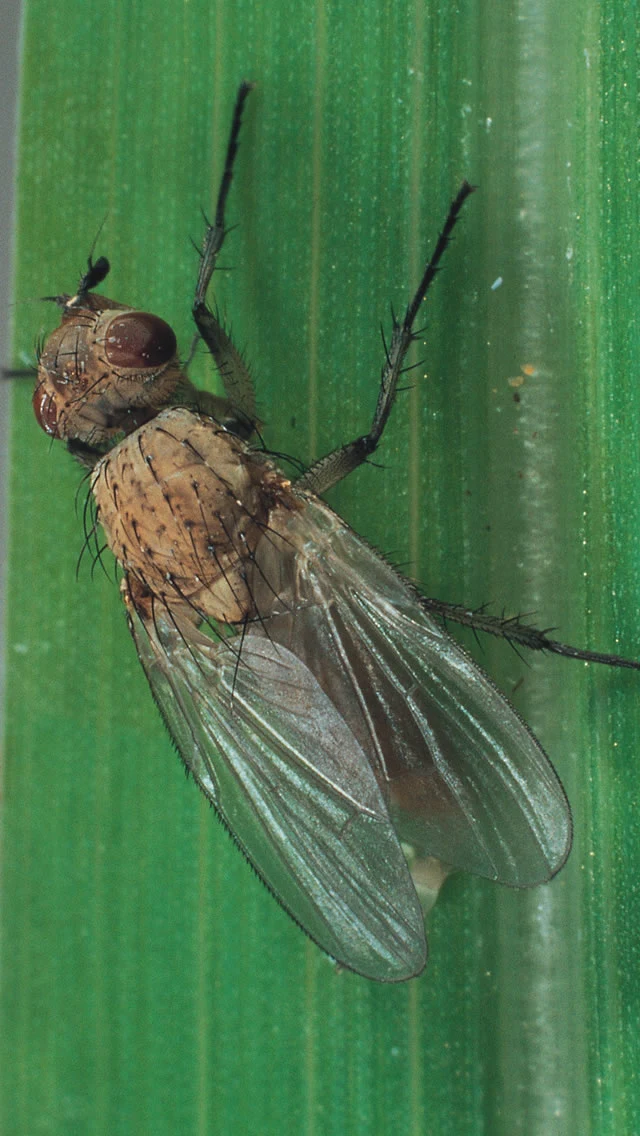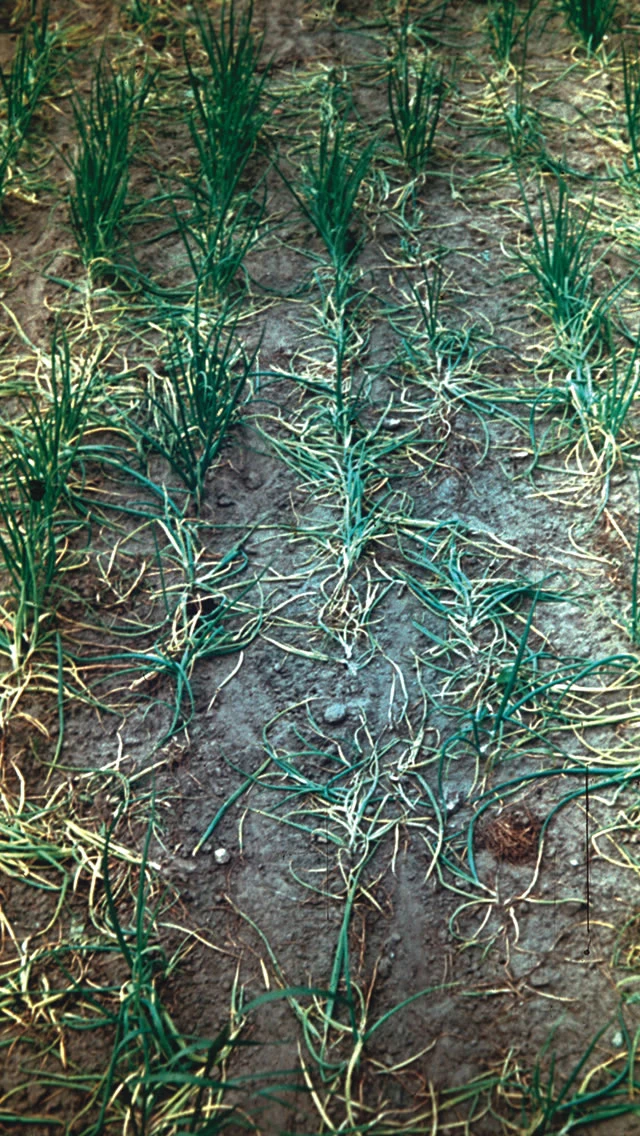
Onion Fly
Delia antiqua
Identification
The adult is slightly smaller than the common house fly and the creamy white maggot is up to 8 mm in length with a blunt rear end tapering towards a more pointed head end. Other host plants include leeks, garlic and ornamental Alliums.
Symptoms
The first signs of attack are yellowing and wilting leaves which can easily be detached.
Life-cycle
Onion flies overwinter as pupae in the soil and the adults emerge in May and after mating lay eggs either at the base of host plants or on the leaves. After 3 days the maggots emerge to feed on the roots or to tunnel into the base of the leaves or bulbs.
After passing through three moulting stages over a three week period, the maggots are fully fed and tunnel into the soil to pupate. There can be several generations throughout the summer months.
Damage to young plants can be severe and where plants are lost the invading maggots move on to adjacent plants in the crop rows. On older plants they feed predominantly within the bulb, but can move up into the leaves. These more developed plants can contain more than 20 maggots per bulb.
Importance
Seedling plants can be killed and damaged bulbs are unmarketable. Seed treatments can help protect against early attacks.
Threshold
None established.

Onion fly adult

Onion fly larvae

Onion fly crop damage

Onion fly larvae damage


